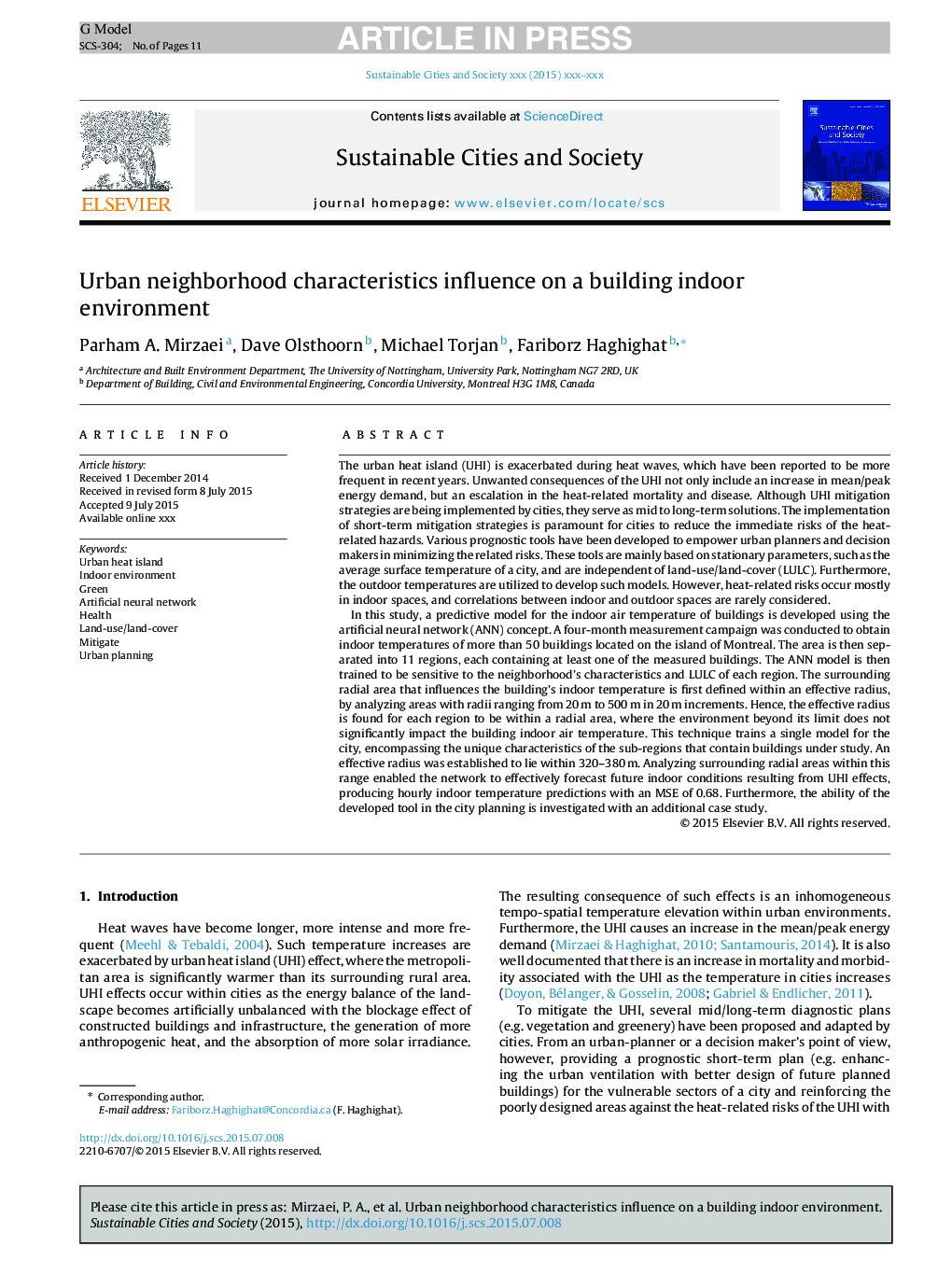| Article ID | Journal | Published Year | Pages | File Type |
|---|---|---|---|---|
| 6776074 | Sustainable Cities and Society | 2015 | 11 Pages |
Abstract
In this study, a predictive model for the indoor air temperature of buildings is developed using the artificial neural network (ANN) concept. A four-month measurement campaign was conducted to obtain indoor temperatures of more than 50 buildings located on the island of Montreal. The area is then separated into 11 regions, each containing at least one of the measured buildings. The ANN model is then trained to be sensitive to the neighborhood's characteristics and LULC of each region. The surrounding radial area that influences the building's indoor temperature is first defined within an effective radius, by analyzing areas with radii ranging from 20Â m to 500Â m in 20Â m increments. Hence, the effective radius is found for each region to be within a radial area, where the environment beyond its limit does not significantly impact the building indoor air temperature. This technique trains a single model for the city, encompassing the unique characteristics of the sub-regions that contain buildings under study. An effective radius was established to lie within 320-380Â m. Analyzing surrounding radial areas within this range enabled the network to effectively forecast future indoor conditions resulting from UHI effects, producing hourly indoor temperature predictions with an MSE of 0.68. Furthermore, the ability of the developed tool in the city planning is investigated with an additional case study.
Keywords
Related Topics
Physical Sciences and Engineering
Energy
Renewable Energy, Sustainability and the Environment
Authors
Parham A. Mirzaei, Dave Olsthoorn, Michael Torjan, Fariborz Haghighat,
